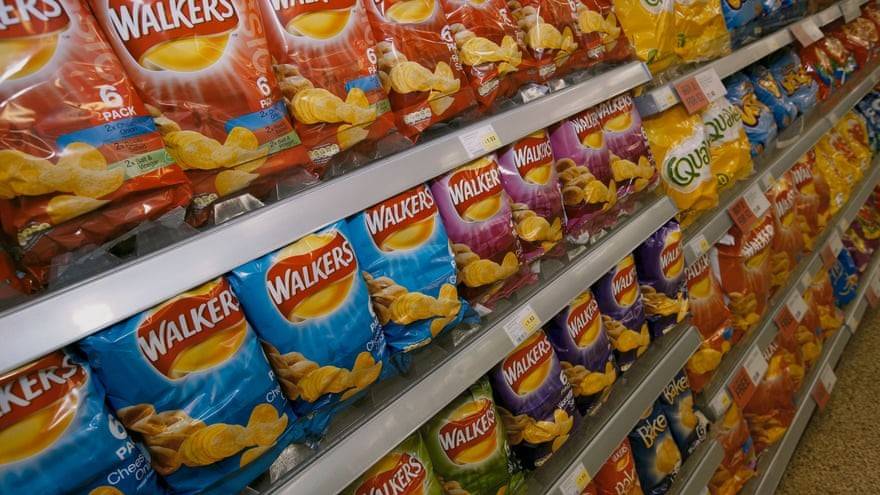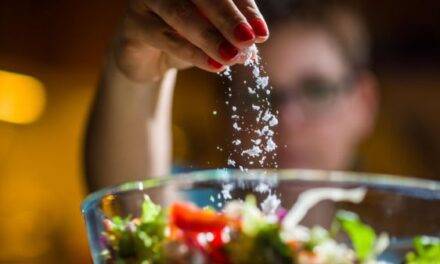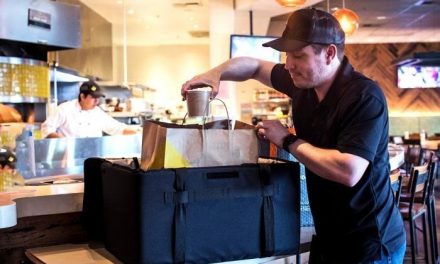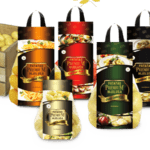So long, salt and vinegar: how crisp flavours went from simple to sensational.
An article by Amelia Tait published by theguardian.com explains it.
It was five decades after crisps were invented that flavouring was applied: cheese and onion. Now you can buy varieties from bratwurst to spiced cola. But what inspired this explosion?
When she was a little girl in Essex in the 50s, Linda Miller would go over to her neighbour Barbara’s house every Friday night and together they would sit on the front step eating crisps. There was only one flavour widely available back then – Smith’s plain potato crisps, which came with a small blue sachet of salt that could be sprinkled over them. One Friday night, the two friends struck upon an idea. “We thought we’d invented a new crisp,” says 68-year-old Miller. Inspired by their weekly fish and chip takeaway, the pair “saturated” their plain crisps with a bottle of vinegar. “It was lovely, lovely – very tasty,” Miller says. “When salt and vinegar crisps came out, I remember thinking: ‘They’re not as good as what we do.’”
Crisps were first mass-produced in the early 20th century, but the first flavoured crisp was released only in the late 50s, after Joe “Spud” Murphy, the owner of the Irish company Tayto, developed a technique to add cheese and onion seasoning during production. Salt and vinegar crisps were launched throughout the UK a decade later, in 1967, when Miller was 16.
In her lifetime, a transformation has taken place on supermarket shelves. Should you want to, you can now buy not only bacon, chicken, chilli and pickled onion crisps, but truffle, pink peppercorn gin, baked camembert, masala chicken, brie, Aberdeen Angus beef, salted caramel, katsu curry and sriracha. (To this day, Miller prefers to vinegar her own crisps.)
How is it possible that, in 60 years, British shops have gone from selling one crisp flavour to selling hundreds – and why are seasonings becoming more unusual? What led Kettle Chips to release a “truffled cheese and a splash of English sparkling wine” flavour in October? Was there a mad scientific breakthrough that caused Walkers to release bratwurst, paella, haggis and spaghetti bolognese crisps in 2010?
In the beginning, says the food historian Nadia Berenstein, industry experts thought of crisps as potatoes. What this means, she explains, is that early seasonings mimicked the flavours that would accompany traditional potato dishes – salt and vinegar, cheese and onion, and barbecue sauce in the US. Although synthetic chemical compounds for flavouring were developed in the middle of the 19th century, Berenstein says the industry exploded after the second world war with the invention of a device called the gas chromatograph, or GC.
“The GC was a really powerful tool for identifying the volatile compounds that are present in and contribute to flavours,” Berenstein says. “Just being able to figure out, isolate and identify these things prior to the GC took a long time. To study the flavour chemistry of apples, you’d have to start with a literal tonne of apples and then process those down to a concentrate of a couple of milligrams.” For the first time, gas chromatography allowed food scientists to quickly understand the chemical compounds behind complex flavours such as cheese.
..//
Tomlinson points to the amalgamation of crisp companies as a reason for the decline in unusual flavours after the 80s (Smith’s, for example, was bought in the 90s by PepsiCo, which owns Walkers; its Bovril flavour didn’t make the cut). From there, crisp flavours became fairly standardised. Sarah Lawson, the marketing manager for the British brand Tyrrells, says 70% to 80% of its sales come from four flavours: lightly salted, salt and vinegar, cheddar and chive, and sweet chilli.
But the market changed again, Berenstein says, roughly a decade ago. “It’s not that there’s been any kind of technological breakthrough that has allowed for these things that were previously only dreamed of,” she says. “It’s a new understanding of consumer desires and a new pace of production. It’s a bloodbath out there in the supermarkets.” New, limited-edition and mystery flavours attempt to capture the market by “promising something new and different”, she says.
..//
“Climate change is going to change agricultural production: people will eat less meat, there will be finite availability of certain kinds of produce, or at least a higher cost to pay,” she says. “But I think, because flavour is potent in very small quantities, it’s one of the things you’ll be able to expand.” As our food options shrink, Berenstein argues, artificial flavourings could become more prevalent as we look to mix up our limited diets.
..//
Source and full article
theguardian.com, So long, salt and vinegar: how crisp flavours went from simple to sensational











